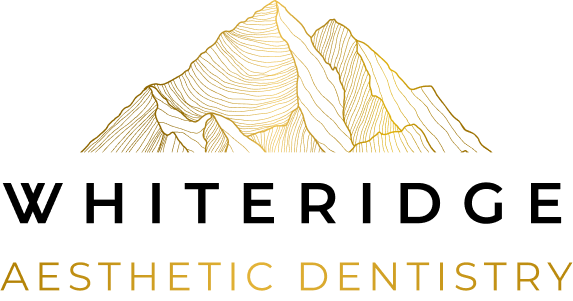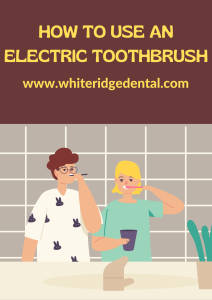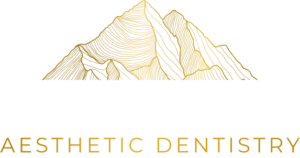Look For The American Dental Association Seal of Acceptance
A discussion about choosing an electric toothbrush should begin with a quick lesson on the American Dental Association Seal of Acceptance.
The ADA (American Dental Association) has promoted the safety of dental products for over 125 years. As far back as 1866, the ADA became involved in determining claims made by toothpaste manufacturers. Eventually, by 1930, the ADA Council of Scientific Affairs created a seal of acceptance.
When issued by the ADA, The Seal of Acceptance certifies that the product in question has data from clinical or laboratory studies that demonstrate the safety and efficacy of the product. If all requirements are met, the ADA will issue a certificate valid for five years. If product changes occur during those five years, the company must reapply for ADA certification.
The ADA’s Council of Scientific Affairs reviews submissions of products seeking the ADA seal of acceptance. Sometimes, the Council seeks additional consultation from experts on dental products. These experts include microbiology, pharmacology, toxicology, or chemistry disciplines.
The first product to be certified by the ADA was in 1931. There are over 200 products on the market with an ADA seal of acceptance.
Purchasing an electric toothbrush with the ADA seal of acceptance ensures the toothbrush is reviewed by the ADA. Whiteridge Aesthetic Dental recommends the Oral-B series of electric toothbrushes to all its patients.
What Does An Electric Toothbrush Eliminate?
Brushing your teeth eliminates a chain reaction of unhealthy dental problems from ever occurring. Ultimately, you are preventing the loss of teeth.
As food and drink enter your mouth, bacteria enter, unseen to your eye. Researchers have identified as many as 500 varieties of bacteria in the mouth. These bacteria serve a helpful purpose but have a potentially harmful side effect; acid forms as bacteria break down food entering the digestive system.
The acid formed to help break down food is where tooth decay begins. The advanced stage of this process is what we commonly call a toothache. Acid eats the protective enamel that forms on the outside of a tooth to create the beginning of tooth decay.
We have two choices when acid has eaten away a tooth’s enamel. One, we can ignore this process and allow the tooth to proceed to decay, ultimately a painful medical problem. Two, we can take action by brushing and flossing our teeth, thus stopping decay.
Our body will do the rest once we do our part in brushing and flossing our teeth. Our body is capable of making new enamel. Once acid eats enamel, fluoride from toothpaste and minerals in our saliva can restore enamel.
The most efficient way to remove unwanted acid from our mouth daily is by flossing and using an electric toothbrush.
Features to Look For On An Electric Toothbrush
- Look for a powerful motor. The entire objective of an electric toothbrush is to get something that does the brushing for you. With a strong motor, you only have to gently glide your toothbrush over your teeth. The electric motor will evenly apply pressure to clean your teeth as you glide the toothbrush.
- Look for affordable refills of the brush heads. If the brush heads are not cost-effective, you can run up the cost of your electric toothbrush fast. Wherever you are price-checking, online or in the store, you should see brush heads in that area. Take time to check their prices to understand the actual cost of replacing a brush head.
- It is equipped with a pressure sensor. If you press too hard while brushing, a pressure sensor warns you to ease off the pressure. A pressure sensor can help prevent you from irritating your gums with too much pressure.
- Check for how long the charge lasts when recharging. Ideally, a charge should last a week. Your dentist recommends brushing for two minutes, which should occur twice daily.
- Look for a two-minute timer on your brush. Why a two-minute timer? Dentists recommend brushing for two minutes every day. An electric toothbrush with this feature assures you will brush for two minutes every time you use the toothbrush.
How To Operate An Electric Toothbrush
In using a manual toothbrush, we get used to applying pressure. Applying pressure is not necessary with your electric toothbrush. Now that you have purchased an electric toothbrush, remember to let the electric motor work for you as you glide the toothbrush over your teeth.
Follow these instructions from Oral-B on how to operate an electric toothbrush:
- Make sure your toothbrush is charged. Many electric toothbrushes have charge-level indicator lights, so you can actually see when the toothbrush is charged.
- Start with the outside surfaces of the teeth. Guide the brush head slowly from tooth to tooth, holding the brush head in place for a few seconds against each tooth before moving on to the next one. Follow along with each tooth’s shape and the gums’ curve.
- Repeat Step 2 on the inside surfaces of the teeth.
- Repeat Step 2 on the chewing surfaces of the teeth as well as behind the back teeth.
- Direct the brush head along the gum line and upon the gums. Again, do not press hard or scrub.
- Try grazing the brush head along your tongue and the roof of your mouth, back to front, to help freshen your breath.
Studies Prove An Electric Toothbrush Is Healthier
A 1998 study compared an electric toothbrush’s ability to fight gingivitis to a manual toothbrush. This study and others since then have proven an electric toothbrush lowers your chance of tooth decay. Keep in mind this is a 1998 study. Since 1998, there have been even more significant improvements in electric toothbrushes.
The critical takeaway from study after study is that an electric toothbrush is more effective at preventing gingivitis than a manual toothbrush is. In the long run, you are less likely to lose teeth if you use an electric toothbrush daily.
Serving the Salt Lake Valley, Cottonwood Heights, Mill Creek, Park City, Summit County, Elko, Nevada, West Wendover, Nevada, and Evanston, Wyoming


